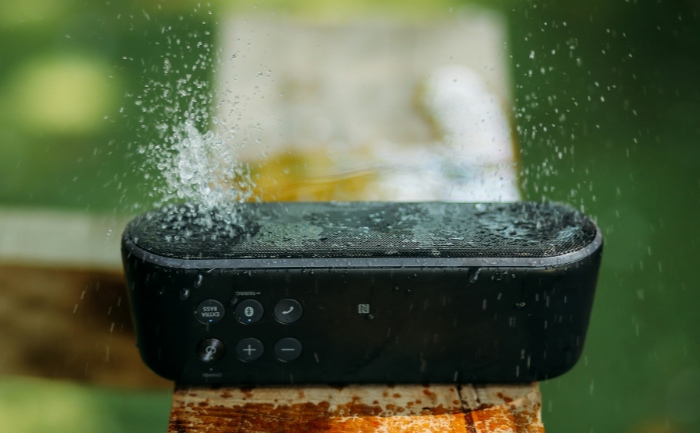IPX8 vs. IP68 Rating: Waterproof or Dustproof?

Smartphones, tablets, and wearable technology have transformed how we live, work, and play. As these devices become integral to our daily routines, their exposure to environmental elements increases significantly.
Moisture, dust, and the accidental coffee spill are no longer mere inconveniences but potential hazards to our digital companions. This reality brings to the forefront the criticality of Ingress Protection (IP) ratings, a global standard that signifies a device’s resilience against such elements.
Among these, the IPX8 and IP68 ratings stand out, offering levels of protection that promise more freedom and less worry for users
Decoding IP Ratings
The Ingress Protection (IP) rating system is a universally recognized method used to define the level of sealing effectiveness of electrical enclosures against intrusion from foreign bodies (such as dust) and moisture. This rating is crucial for anyone looking to purchase electronic devices that may come into contact with water or dust.
What Each Digit Represents
An IP rating is typically followed by two digits. The first digit indicates the level of protection that the enclosure provides against the ingress of solid objects, including dust particles. These numbers range from 0 (no protection) to 6 (dust tight).
The second digit represents the enclosure’s protection level against the ingress of moisture, with ratings that go from 0 (no protection) to 9K (protection against high-pressure water jets and steam cleaning).
For instance, a device with an IP68 rating is completely protected against dust (6) and can be immersed in water beyond 1 meter (8) for a variable amount of time specified by the manufacturer.
The Significance for Consumers and Manufacturers
For consumers, an IP rating provides a clear indication of a device’s durability in various environments, enabling a comparison based on their specific needs. Whether it’s for outdoor activities, near water bodies, or in dusty conditions, knowing the IP rating helps in selecting a device that matches their lifestyle.
Manufacturers, on the other hand, use IP ratings as a benchmark to design and test their products against. This not only aids in developing products that meet consumer expectations but also in distinguishing their offerings in a competitive market.
Compliance with IP ratings can enhance a product’s value proposition by assuring customers of its resilience and reliability.
Exploring the IPX8 Rating
Devices boasting an IPX8 rating offer an impressive level of protection against water ingress, making them suitable for continuous immersion in water beyond 1 meter. This rating suggests that the device can withstand situations where it is submerged in deeper waters for extended periods, although the exact conditions (such as depth and duration) are determined by the manufacturer.
IPX8 in Real-World Scenarios
An IPX8 rating is especially relevant for gadgets designed for use near or in water, such as waterproof smartphones, cameras, smartwatches, and fitness trackers. These devices are engineered to survive not just splashes or brief immersion in water but also continuous submersion, making them ideal for swimmers, divers, or anyone who enjoys water sports.
For instance, a smartwatch with an IPX8 rating can be worn while swimming laps in a pool, allowing users to track their fitness without worrying about water damage.
Devices Featuring IPX8 Protection
Several high-end smartphones and wearable devices currently on the market come with an IPX8 rating. This includes certain models from popular brands that promise water resistance at depths specified by their manufacturing standards.
Such devices undergo rigorous testing to ensure they meet these claims, providing consumers with confidence in their durability and performance underwater.
Considerations for IPX8 Rated Devices
While an IPX8 rating indicates a device’s ability to withstand prolonged submersion in water, it’s important to note the limitations and conditions attached to this certification. Manufacturers often specify the maximum depth and time limit for which the device can be submerged without incurring damage.
Furthermore, the protection offered by an IPX8 rating might not extend to other forms of damage, such as drops, shocks, or exposure to chemicals and saltwater. Therefore, while an IPX8 rated device is robust in terms of water resistance, users should still handle it with care and be mindful of the environment in which it is used.
Unpacking the IP68 Rating

The IP68 rating serves as a benchmark for the highest level of protection offered against both dust and water ingress in electronic devices. This rating guarantees that a device is not only dust tight but also capable of withstanding continuous submersion in water under conditions specified by the manufacturer, usually up to a certain depth and for a limited duration.
Real-Life Applications of IP68 Rated Devices
Devices with an IP68 rating are designed to endure challenging environments, making them ideal for individuals with active lifestyles or jobs in demanding conditions. For example, smartphones and smartwatches with this rating are perfect for outdoor adventurers who might encounter rain, mud, or bodies of water.
Similarly, industrial equipment with an IP68 rating is reliable in dusty or wet industrial settings, ensuring uninterrupted operation regardless of the environmental conditions.
Examples of IP68 Protected Devices
Many leading smartphones, tablets, and wearables on the market today come with an IP68 rating. These devices are tested to survive in water at depths of more than 1 meter, typically up to 1.5 meters for about 30 minutes, though specifics can vary by manufacturer.
This level of protection allows users to engage in activities such as swimming, hiking in the rain, or working on construction sites without worrying about their device being damaged by water or dust.
Limitations and Cautions for IP68 Devices
Despite the high level of protection provided by the IP68 rating, it’s important to be aware of its limitations. The guarantee of water and dust resistance is often based on laboratory conditions, which might not reflect real-world scenarios like moving water or saltwater exposure.
Additionally, the protective capabilities of a device may diminish over time due to wear and tear or damage from dropping. Therefore, while IP68 rated devices offer a significant degree of durability, it is wise to treat them with care and not overly rely on their resistance features in extreme conditions.
Distinguishing Between IPX8 and IP68 Ratings
When selecting a device for its water and dust resistance capabilities, understanding the distinction between IPX8 and IP68 ratings is crucial. While both ratings indicate a high level of protection, the nuances between them can significantly impact a device’s suitability for your lifestyle or work environment.
What Sets IPX8 and IP68 Apart
The main difference lies in the type of protection each rating offers. The IPX8 rating signifies a device’s ability to be submerged in water, generally deeper than 1 meter, for prolonged periods as specified by the manufacturer, without any guarantee against dust ingress.
In contrast, the IP68 rating not only includes water submersion resilience similar to IPX8 but also adds comprehensive dust protection, making devices virtually dust tight.
This distinction is crucial because it affects where and how these devices can be safely used. For instance, an IPX8-rated device is suitable for activities involving prolonged submersion in water, like swimming or diving, but may not be the best choice for environments where dust exposure is a concern.
On the other hand, an IP68-rated device is equipped to handle both challenges, offering more versatility for users who need protection against various elements.
Practical Implications for Device Usage and Durability
Choosing between an IPX8 and an IP68 rating involves considering the environments in which the device will be used. For outdoor adventurers or people working in dusty conditions who occasionally encounter water, an IP68-rated device offers peace of mind with its dual protection.
Meanwhile, for avid swimmers or those mainly concerned with water damage, an IPX8 rating provides adequate assurance.
However, it’s essential to remember that no device is invincible. Over time and with exposure to extreme conditions, the effectiveness of these protective measures can diminish.
Regular wear and tear, as well as the potential for seal degradation, means that even the most durable devices require care and occasional checks to maintain their resistance capabilities.
Selecting Suitable Protection for Your Device
Choosing between an IPX8 and IP68 rated device involves more than just comparing numbers. It requires a thoughtful consideration of where and how you plan to use your device, the environmental challenges it might face, and the balance between necessity and cost.
Evaluating Your Needs and Environment
The decision between an IPX8 and IP68 rating primarily hinges on two factors: exposure to dust and the need for water immersion protection.
- Consider Your Environment: If your daily activities or work involves environments filled with dust, sand, or other fine particles, an IP68-rated device is indispensable. This rating ensures that your device remains protected from dust ingress, which can be crucial for those in construction, agriculture, or manufacturing. Conversely, if your primary concern is water exposure, particularly prolonged immersion, an IPX8-rated device will suffice.
- Assess Usage Scenarios: For enthusiasts of water sports, such as swimming, surfing, or diving, an IPX8 rating provides the assurance that their device can withstand extended periods underwater. However, if your adventures take you both underwater and into dusty or sandy landscapes, the comprehensive protection offered by an IP68 rating becomes essential.
- Longevity and Durability: While both ratings promise a high level of protection, the longevity of this protection can be influenced by the device’s exposure to extreme conditions. Regular maintenance and care are crucial, especially for devices frequently used in challenging environments.
Tailored Recommendations
- For Outdoor Adventurers and Professionals: If your lifestyle or profession takes you into varied environments where both water and dust are concerns, opt for an IP68-rated device. This rating offers the versatility and durability needed to withstand diverse conditions.
- For Aquatic Sports and Activities Enthusiasts: If your primary interaction with the elements involves water, an IPX8-rated device will meet your needs. It offers robust protection for prolonged immersion, making it ideal for swimmers, divers, and other water-based activities.
- For Everyday Use and Casual Exposure: For individuals who need a device that can handle the occasional splash or dip without the necessity for dust protection, an IPX8 rating provides a suitable level of water resistance. This choice is cost-effective for those who don’t require the additional dust protection of an IP68 rating.
Conclusion
From the detailed exploration of what each digit in the IP rating signifies to the practical implications these ratings hold for device usage and durability, it’s clear that making an informed choice can significantly impact how well your devices serve you in various environments.
Devices with an IPX8 rating offer remarkable resilience against water immersion, suitable for activities that involve prolonged submersion. On the other hand, IP68-rated devices provide comprehensive protection against both dust and water, making them ideal for those who face diverse environmental challenges.
The decision between selecting a device with an IPX8 or IP68 rating should be influenced by an individual’s specific needs and the conditions in which the device will be used. Whether for professional settings, outdoor adventures, or aquatic activities, choosing the right IP rating ensures that your device can withstand the elements it will encounter.



